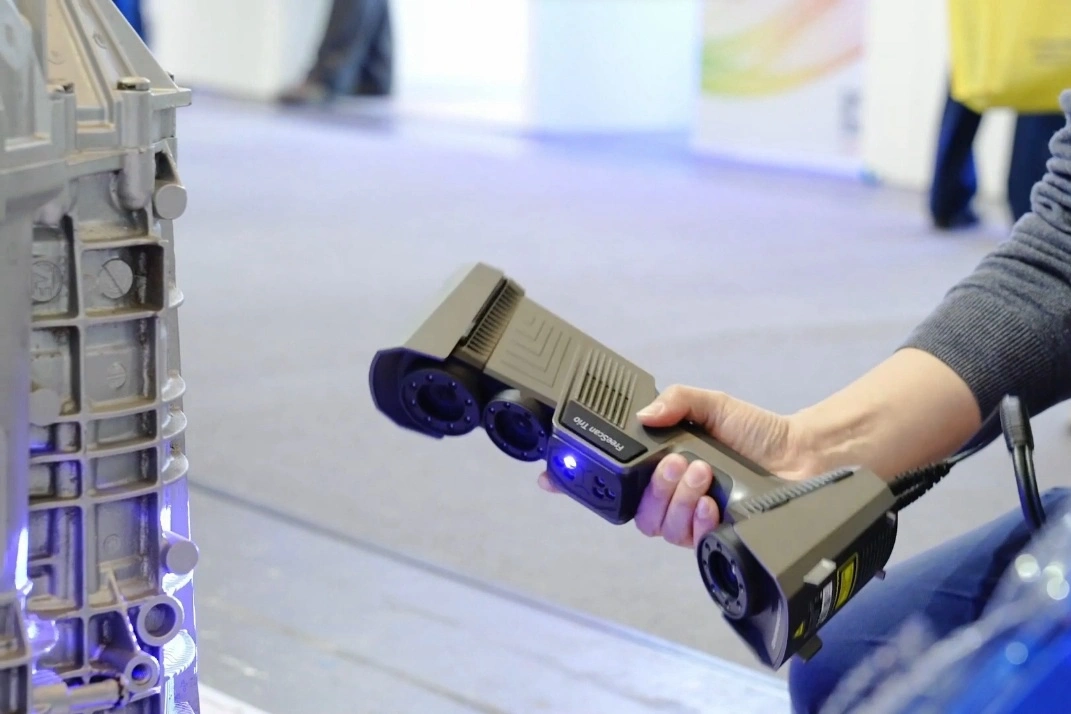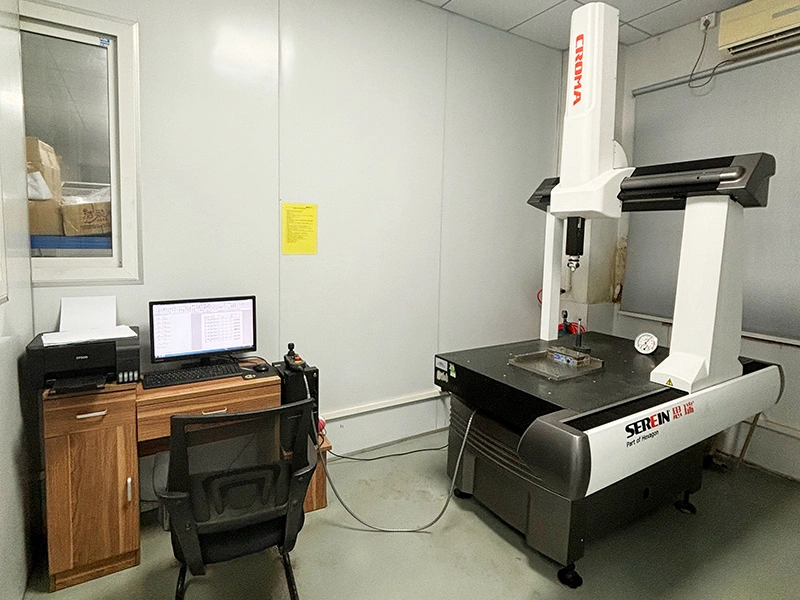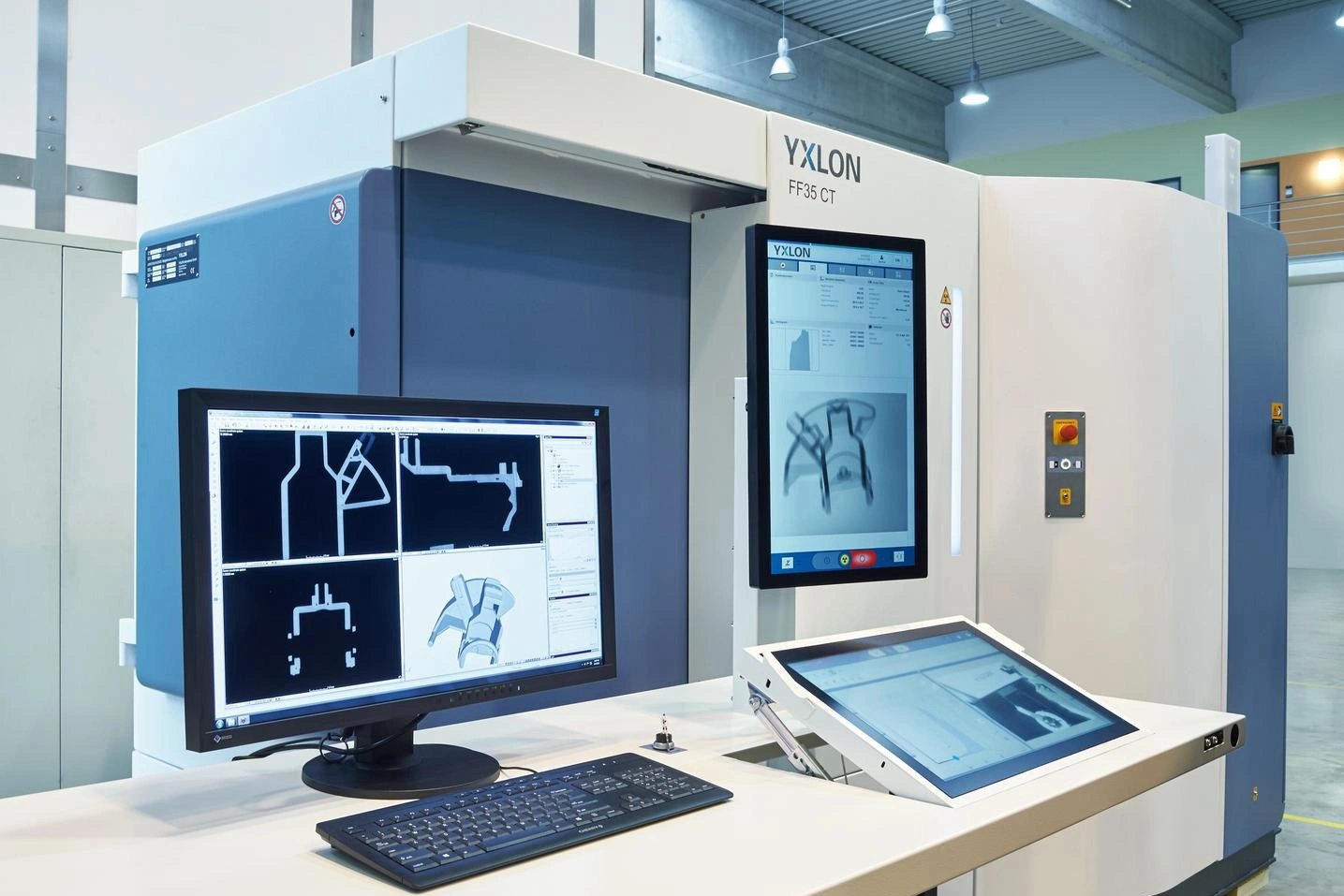3D Scanning (FAI): Full-Surface CAD Deviation Control for AM
Introduction: From "Sample Measurement" to "Full Surface Control" – How 3D Scanning Redefines AM First Article Inspection
In metal additive manufacturing, geometric accuracy directly determines assembly performance and functional reliability. As quality engineers at Neway, we are deeply aware of the limitations of traditional CMM inspection: lengthy measurement cycles, limited sampling points, and the risk of missing deviations on critical features. These challenges are especially evident for aerospace components with complex freeform surfaces. In response, we have introduced 3D-scanning-based First Article Inspection (FAI). This revolutionary method captures high-density, full-surface data, providing an unprecedentedly complete basis for quality evaluation.
What Is 3D-Scanning-Based First Article Inspection?
The Core Objective of FAI and Its Natural Alignment with 3D Scanning
The fundamental purpose of FAI is to verify whether the first production part fully meets all design specifications. At Neway, we combine this traditional concept with advanced digital technology. 3D scanning can rapidly capture complete point cloud data of the part’s surface and generate an accurate "digital twin" model. This full-surface data acquisition aligns perfectly with FAI’s requirement for comprehensive verification, enabling us to thoroughly validate every single feature.
Technical Workflow: Scanning, Alignment, Analysis, and Reporting
Our 3D scanning FAI process is built on strict standardization. First, high-precision blue light scanners are used to acquire complete point cloud data, with point spacing controlled within 0.05 mm. Next, best-fit alignment algorithms precisely align the point cloud to the original CAD model—this step is critical, as its accuracy directly affects the reliability of all subsequent analysis. Specialized software is then used to generate full-surface deviation color maps, visually indicating local deviations. Finally, the system automatically generates FAI reports compliant with AS9102, including verification results for all key characteristics.
How Neway Integrates 3D Scanning FAI into a Closed-Loop AM Quality System
Rapid Post-Print Full-Geometry Verification
After the part completes the necessary post-processing steps, we immediately initiate the 3D scanning inspection workflow. For example, for an aerospace engine bracket, traditional CMM inspection may require more than 8 hours, whereas our 3D scanning system completes full-surface acquisition and analysis in under 2 hours. This improvement in efficiency enables early detection of potential issues, significantly reducing downstream quality risks. 3D scanning is particularly effective for evaluating deformation after heat treatment, offering unmatched speed and coverage.
Distortion Trend Analysis and Process Feedback
The greatest value of 3D scanning FAI lies not only in pass/fail judgment, but in providing data-driven insight for process optimization. By interpreting full-surface deviation color maps, we can identify systematic distortion patterns. In one batch of satellite bracket parts, for instance, we observed a consistent warping trend, directly indicating issues in residual stress distribution during the 3D printing process. Based on these findings, our process team adjusted scan strategies and support designs, successfully bringing distortion within tolerance.
Providing Accurate References for Secondary Machining
For complex parts that combine additive and subtractive processes, 3D scanning FAI plays a critical role in in-process control. For an engine turbine casing, for example, once printing and hot isostatic pressing are completed, precision CNC machining is required to meet tight mounting interface tolerances. Using the precise geometry captured by 3D scanning, we define an optimized machining coordinate system that ensures sufficient stock on all critical features while avoiding over-machining.
Typical AM Issues Revealed by Full-Surface Deviation Analysis
Shrinkage and Warping
In metal 3D printing, non-uniform thermal cycles result in residual stresses, which in turn cause shrinkage and warping. Full-surface deviation maps from 3D scanning clearly reveal these deformation patterns. For example, large plate-like structures often show edge uplift, while sections with abrupt thickness transitions exhibit torsional distortion due to differential cooling rates. These insights guide us in optimizing preheating strategies and scan paths.
Out-of-Tolerance Feature Dimensions
For parts with fine features, 3D scanning exposes dimensional deviations that traditional sampling methods may overlook. In one medical implant project, we identified that the strut diameters in a porous structure were consistently 0.1 mm below the nominal value, a subtle yet systematic deviation that would have affected the mechanical performance. Parameter analysis traced the issue to insufficient laser power, which we promptly corrected.
Surface Quality and Burrs
Although 3D scanning focuses primarily on geometry, high-resolution data can also indirectly reflect surface conditions. After completing deviation analysis, we pay special attention to regions with abnormal data behavior and, where necessary, apply targeted surface treatment or finishing. This integrated approach ensures that both dimensional accuracy and surface quality meet customer requirements.
"Full Surface Control" – Core Value for AM Production
3D scanning FAI technology brings a fundamental upgrade to our quality control system. First, it achieves near-100% coverage of geometric features, eliminating inspection blind spots. Traditional sampling may miss localized deviations, whereas full-surface scanning verifies every detail. Second, it converts abstract tolerances into intuitive color maps, greatly accelerating decision-making and enhancing accuracy. Most importantly, it creates a complete digital quality record for each part, a traceability capability that aligns perfectly with the stringent requirements of industries such as aerospace.
3D Scanning FAI and Its Synergy with Other Inspection Technologies
Complementarity with CMM in Accuracy and Efficiency
In our inspection architecture, 3D scanning and CMM form a complementary combination. 3D scanning delivers fast, full-surface screening and identifies potential risk areas. Critical dimensions and out-of-tolerance regions are then re-verified using CMM for micrometer-level accuracy. This division of roles ensures comprehensive coverage without sacrificing precision, achieving an optimal balance between efficiency and accuracy.
Integration with Industrial CT for Inside–Out Control
For parts with complex internal features, we combine 3D scanning with industrial CT. 3D scanning manages the external geometry, while CT focuses on internal defects and channels. This outside-in inspection framework offers a comprehensive view of part quality and is particularly well-suited for aerospace and medical components that require stringent safety and reliability standards.
Supporting Sample Selection for Mechanical Testing
During material qualification and process development, 3D scanning FAI ensures the dimensional conformity of test specimens. By verifying that mechanical test samples strictly meet geometric specifications, we eliminate data scatter caused by nonconforming specimens. This rigor in pre-validation strengthens the reliability of performance data and the robustness of derived process parameters.
Case Study: How 3D Scanning FAI Optimized the Printing Process for a Batch of Inconel 718 Combustor Components
In an aerospace program, we were tasked with producing combustor components for a specific engine model. The initial batch of Inconel 718 parts manufactured via powder bed fusion exhibited dimensional deviations in the flanges during conventional inspection. We immediately implemented 3D scanning for FAI to facilitate detailed analysis.
The scan results indicated consistent inward shrinkage in the flange region, with a maximum deviation of 0.25 mm, which far exceeds the 0.1 mm tolerance. Further examination of deviation patterns revealed a strong correlation between wall thickness and local distortion, with thicker areas exhibiting significantly greater shrinkage. This suggested that non-uniform cooling was the root cause.
Based on these findings, our process team implemented two corrective actions: first, applying reverse deformation compensation in the CAD model for the affected regions, with compensation values calculated directly from scanning data; second, optimizing scan strategies in those zones using region-specific parameters to balance heat input. Subsequent production, validated through 3D scanning, confirmed that all critical dimensions were within tolerance, successfully resolving the process challenge.
Conclusion: Advancing Toward Digital Quality Assurance – Bringing Every Feature Under Control
The application of 3D-scanning-based FAI marks a significant step forward in Neway’s digital quality assurance journey. This technology transforms dimensional inspection of additively manufactured parts from limited sampling to comprehensive, full-surface evaluation. Throughout each project, we not only confirm that parts meet specifications but also leverage rich geometric data to continuously refine manufacturing processes. We sincerely invite customers with stringent dimensional requirements to experience our data-driven custom manufacturing services and to witness the powerful impact of digital quality control.
Frequently Asked Questions
What is the accuracy of your 3D scanning system, and how does it compare to CMM?
How long does it take to scan a complex part and generate analysis results?
How do you address scanning challenges for reflective or dark surfaces?
What specific contents and data are included in your inspection reports?
Is this technology applicable to metal 3D printed parts of all sizes?




